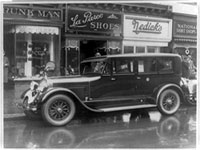Immigration, Religion, and Culture on New York's Lower East Side
This workshop will "treat the Lower East Side, a neighborhood known for its immigrant history, as a primary source. Walking tours, lectures, and photography will bring teachers and a diverse group of scholars together to learn about how various ethnic, religious and immigrant groups adapted their religion and culture to America. The workshop aims to provide teachers with the tools and inspiration to bring the Lower East Side back to their classrooms." Specific topics will include "Eldridge Street Synagogue and Religious Adaptation," "Chinatown and the Development of a Port Culture on the Bowery/Chatham Square," "The African Burial Ground and African American Communities," "Irish and Italian Immigration and Foodways," and "The Interaction Between East European Jews and the German Christians on the Lower East Side."
